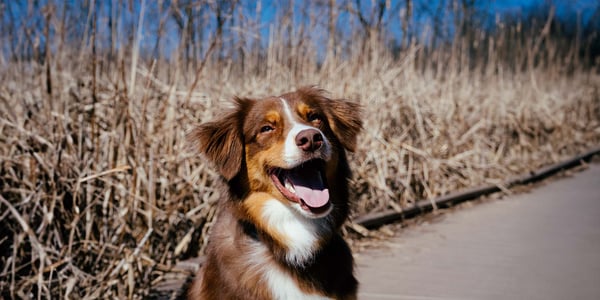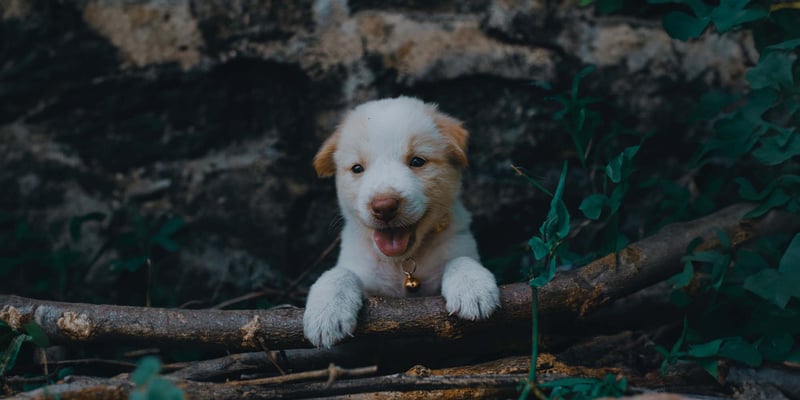When Do Puppy Teeth Fall Out? - Guide for New Pet Owners
Index:



Introduction
Noticed your furry bundle of joy turning into Jaws? Don’t worry, this is totally normal. Just like us humans, puppies also go through the key developmental stages of teething. This means you may find them chewing anything they can get their paws on (such as you), however, it will pass.
It’s also perfectly normal to notice tiny teeth around your house, though whether you put them under your pup’s pillow for the Doggy Tooth Fairy is up to you.
Some new owners are worried when their puppy's teeth fall out and don’t know what to expect during this stage. Does this sound like you? Fear not as we’ve put together a guide to help new pet owners understand everything there is to know about puppy teeth.
When do puppy teeth fall out?



So, you’ve just brought your puppy home. Congratulations! You’re probably also aware by now that puppies grow very quickly. This means you’re in for quite the ride.
Puppies begin teething from as early as 2 weeks old and by around 6 weeks, their deciduous teeth will have fully erupted. Deciduous is the fancy name for baby teeth.
The incisors and canines are the first to erupt, these are the teeth at the front of the mouth. Dogs don’t have any kind of baby molars so at around 12 weeks, the baby teeth begin to fall out and the permanent teeth begin to erupt. The teething process can still take up to the 5-month mark for the premolars and molars to come in.
Your puppy should have a full set of permanent teeth at around 6 months of age. In total, there should be 42 teeth in your pup's mouth. Any puppy teeth that fail to fall out can be extracted by a vet.
Feel a bit confused by all this teeth-talk? Here’s a breakdown of the four different types:
Canines - These are the pointy teeth everyone recognises. Lots of people call them fangs. You’ll find two on the top and two on the bottom, these teeth are what make your dog hang on so tightly to their favourite toy in a game of tug-of-war.
Incisors - These are the smaller teeth at the front of your dog’s mouth. Their incisors help them to eat meat and groom themselves properly. You’ll find a total of 12 incisors in your dog’s mouth, 6 on the bottom and 6 on the top.
Premolars - The premolars can be found just behind the canine teeth. These are the teeth that are used when a dog is chewing something with the side of their mouth.
Molars - Just like us, dogs have molars too. These are flat, robust teeth that are used for chewing and grinding. Again, you’ll find 6 on the top and 6 on the bottom.
Signs of teething
Teething can be a painful time in a pup’s (and owner’s) life. In the same way human babies experience discomfort when they teethe, dogs do too so it’s important to ensure you have everything you need to make the process as pain-free as possible.
There are lots of signs of teething in puppies with the most common being:
Bleeding gums
Missing teeth
Drooling
Bad breath
Inflamed gums
Decreased appetite
Low mood
When teething, puppies tend to latch on to anything they can find that will soothe their aching gums. This means it’s important to puppy-proof your home to ensure your most prized possessions are safe from harm during the teething period.
The good news is that teething behaviours can be easily managed at home. The best thing a pet parent can do is to provide high-quality chew toys in a wide range of textures to help your pup soothe their 42 new gnashers.
Setting boundaries with your pup is very important in this stage and can help them understand that your favourite piece of furniture is always off-limits.
Lots of owners use teething time as a way to reinforce soft-mouth training. Soft-mouth training refers to when a dog can consciously alter the strength of their bite depending on the situation i.e., taking treats gently and not snatching them from you.
We’ve also written this guide to stop a puppy biting, something a lot of new owners can find frustrating!
What do puppy teeth look like when they fall out?



If you’ve never had a puppy you may feel slightly alarmed when your pup loses their teeth or if you find them around your house. Puppy teeth tend to look exactly like small grains of rice. This is because puppy teeth don’t fall out whole like human teeth tend to.
Dogs swallow a lot of their puppy teeth too, though don’t panic - this is completely normal behaviour. Because the teeth are so small, they’re not recognised as a choking risk and can usually be easily broken down and digested.
So don't panic if you find a loose tooth when you check your puppy's mouth. Dental health is always important and a dental care regimen is key to keeping your pup in tip-top shape.
Another thing to note is that they may have issues with chewing or eating if they are losing their teeth so be sure to give them some soft puppy food and a soft chew toy to help ease their discomfort . This helps to prevent any dental issues while they go through the puppy teething process.
Impact on puppy development



Teething is a huge part of puppy development and can impact further changes in their eating habits and jaw strength, for example.
When teething, puppies tend to eat slower. Some puppies can struggle with eating a lot during this time due to the pain and uncomfortable nature of teething. Speaking to your vet can help as they can recommend what soft foods are safe for your pup to eat.
Waggel members get access to Joii online vet care for free with every policy. This means all you have to do is download their app, sign up, and book your free consultation.
Gaining peace of mind from a qualified vet or nurse can help to ease any anxiety surrounding puppy teething. After all, who wouldn’t want free, immediate advice?
During the teething stage, puppies begin to gain lots of strength in their jaw. Nipping and biting is a common complaint from owners during this time as pups get more mouthy. As mentioned above, utilising this time to set boundaries and train your pup can help to avoid any incidents further down the line.
Supporting your puppy during this time is key and can also help to further your bond together. This means providing them with soft food and a range of chew toys.
Conclusion
So there we have it, the ins and outs of puppy teething. It’s important to remember that, unlike babies, puppies go through two phases of teething.
They start to get their teeth very quickly from as early as 2 to 3 weeks old and at around 8 weeks old begin to lose these teeth to make way for their adult teeth. Growing the adult teeth is usually the hardest part and is where your pup will need some extra TLC from you.
To make the process as smooth as possible, ensure you have lots of things on hand to help your pup from smooth treats and food to specific teething chew toys.
It’s also important, during this time, to train your pup to respect your boundaries and learn the difference between soft and hard biting. This will ensure that they know how to behave not only with you but with guests in your home, children, or other dogs they meet.
At Waggel, we pride ourselves on including dental coverage in our policies. This means that your pup must have their teeth checked every 12 months and have this documented on their health records in order for you to claim on dental care.
Most puppies go through the teething phase without any issues, however, if you are worried we recommend speaking to your veterinarian who can offer additional advice and support.
As a final note - don’t be alarmed if you find fragments of puppy teeth around your home, whilst it can seem a bit creepy, it’s a totally normal part of dental development!
Waggel Pet Insurance
Need more help? You're in luck if you're a Waggel Pet Insurance member. Along with our excellent coverage, we offer access to a 24/7 online vet to answer all your sticky questions, especially if you need grooming assistance.
Not a member? Why not get a quote now and cover your furry friend for a range of illnesses, all while enjoying our amazing perks and rewards.
Want more like this?
Get updates from us with helpful info, advice, answers to frequently asked questions and much more.
Index:
Related posts:
Get your quote
Along with our excellent coverage, we offer access to a 24/7 online vet to answer all your sticky questions.





